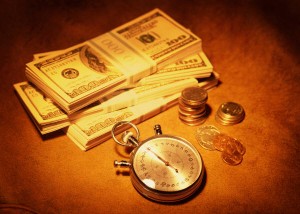Today’s class – on Bloomsbury Group aesthetics – was difficult. And in some respects that is the point of Bloomsbury Group aesthetics, including Forster’s novel. Forster likes to put the characters in his novels into impossibly complex situations which he referred to (in Howards End, as it happens) as “muddle.” The complexity of life, human relations, desires and wants, expectations and failings, are all thrown together in a puzzling and largely untenable set of predicaments. The point, many critics think, is not for readers to resolve or judge these situations one way or another (as we are invited to do with Roxana or Emma) or even to sympathize with them (as we do Maggie I think) but rather for readers to appreciate that good and bad qualities co-exist with each other and in themselves. The “human condition” is revealed to be in its essence not right or wrong but simply complex.
What does this have to do with money? You all might recall the scene early in the novel where the women in Margaret and Helen’s circle debate “What are we to do with our money.” No one can come to any satisfactory solution – and the women’s inability to decide is in part what leads to the central plot thrust of the rest of the novel. Complexity is causal (as Robert Trigo reminds us all plots are) but not in the direction of resolution (like Emma) but more in the direction of appreciation – for the “beauty” (a word that appears many times in the novel) of what is impossible. To see this muddle though is to appreciate the “form” of the novel – mixed up, messed up, confusing, complex, without it being something that “teaches” anything in particular. The novel becomes an opportunity to see the world – and even the economy as we will see with Keynes – with an eye to all of its difficulties and somehow see it all as an “experience” that we can measure and even possibly appreciate.
The novelist Zadie Smith has a wonderful essay on “muddle” in Forster’s novels. It was published in the Guardian in 2003.
